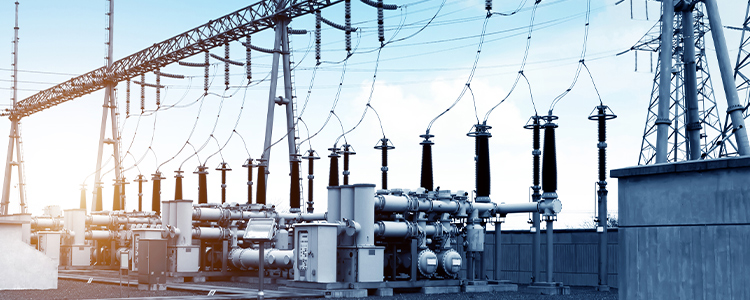- All
- Product Name
- Product Keyword
- Product Model
- Product Summary
- Product Description
- Multi Field Search


Views: 0 Author: Site Editor Publish Time: 2024-09-02 Origin: Site
Switchgear is a crucial component in electrical systems, serving as the backbone for controlling and distributing electrical power. Its reliability and efficiency are paramount for the smooth operation of any electrical network. However, like any other mechanical or electronic system, switchgear requires regular maintenance to ensure its optimal performance and longevity.
In this article, we will delve into the key maintenance practices for switchgear, providing a comprehensive guide for professionals in the field. From routine checks to in-depth inspections, we will explore the essential steps to keep your switchgear in top condition.
Whether you’re managing a large industrial plant or overseeing a smaller facility, understanding the intricacies of switchgear maintenance is vital for safeguarding your operations and preventing costly downtimes.
Switchgear is a crucial component in electrical systems, serving as a centralized hub for controlling, protecting, and isolating electrical equipment. It encompasses a range of devices, including circuit breakers, fuses, switches, and relays, all housed in a protective enclosure.
The primary function of switchgear is to regulate the flow of electricity, ensuring the safe and efficient distribution of power. It acts as a safeguard against overloads, short circuits, and other electrical faults, thereby preventing damage to the equipment and minimizing the risk of electrical hazards.
Switchgear is typically used in high-voltage applications, such as power generation plants, substations, and industrial facilities, where the demand for reliable and uninterrupted power supply is paramount. Its robust design and advanced technology make it an indispensable part of modern electrical infrastructure.
Regular maintenance is crucial for the longevity and optimal performance of switchgear. It ensures the safe and reliable operation of electrical systems, minimizes the risk of unexpected failures, and extends the lifespan of the equipment. Neglecting maintenance can lead to costly downtimes, safety hazards, and premature replacement of components.
By implementing a proactive maintenance strategy, organizations can identify potential issues before they escalate into major problems. This includes routine inspections, testing, and servicing of switchgear components to detect signs of wear and tear, corrosion, or malfunction.
Additionally, proper maintenance helps to ensure compliance with industry standards and regulations, safeguarding against legal liabilities and ensuring the safety of personnel and equipment. It also contributes to the overall efficiency and reliability of electrical systems, reducing operational costs and enhancing productivity.
In summary, regular maintenance is essential for the smooth and uninterrupted operation of switchgear, and by extension, the entire electrical system. It is a critical investment that pays off in terms of safety, reliability, and cost savings in the long run.
Switchgear maintenance encompasses a range of practices aimed at ensuring the safe and reliable operation of electrical systems. Here are some key maintenance practices for switchgear:
1. Visual Inspections:
Regular visual inspections are crucial for identifying any signs of wear and tear, corrosion, or damage to the switchgear components. Check for loose connections, leaks, and any visible signs of distress or abnormality.
2. Electrical Testing:
Conduct routine electrical tests to assess the insulation resistance, power factor, and dielectric strength of the switchgear. This helps to detect any potential issues with the insulation system and ensures the integrity of the electrical connections.
3. Cleaning:
Keep the switchgear clean and free from dust, debris, and contaminants that could interfere with its operation. Regular cleaning helps to maintain optimal performance and prevents overheating or electrical arcing.
4. Lubrication:
Proper lubrication of moving parts, such as switches and circuit breakers, is essential for smooth operation and longevity. Use appropriate lubricants and follow the manufacturer’s recommendations for lubrication intervals.
5. Thermal Imaging:
Utilize thermal imaging technology to detect hot spots and areas of excessive heat in the switchgear. This helps to identify potential issues with electrical connections or components that may require attention.
6. Functional Testing:
Perform functional tests on all switchgear components to ensure they are operating correctly and as intended. This includes testing the trip mechanisms, control circuits, and interlocks to verify their functionality.
7. Documentation:
Maintain detailed records of all maintenance activities, including inspections, tests, and servicing. This documentation is essential for tracking the maintenance history of the switchgear and for compliance purposes.
8. Professional Servicing:
Engage qualified professionals or authorized service providers for servicing and repairs. They have the expertise and specialized tools required to carry out maintenance tasks safely and effectively.
By following these key maintenance practices, organizations can ensure the safe and reliable operation of their switchgear, minimizing the risk of unexpected failures and extending the lifespan of the equipment.
In conclusion, regular maintenance is paramount for the longevity and optimal performance of switchgear. By implementing a proactive maintenance strategy that includes routine inspections, testing, and servicing, organizations can ensure the safe and reliable operation of their electrical systems.
Investing in proper maintenance not only minimizes the risk of unexpected failures and safety hazards but also extends the lifespan of the equipment, reducing operational costs and enhancing productivity.
Additionally, adherence to industry standards and regulations ensures compliance, safeguarding against legal liabilities and ensuring the safety of personnel and equipment.
In summary, regular maintenance is a critical investment that pays off in terms of safety, reliability, and cost savings in the long run. It is an essential practice for any organization that relies on switchgear for the smooth and uninterrupted operation of their electrical systems.
content is empty!